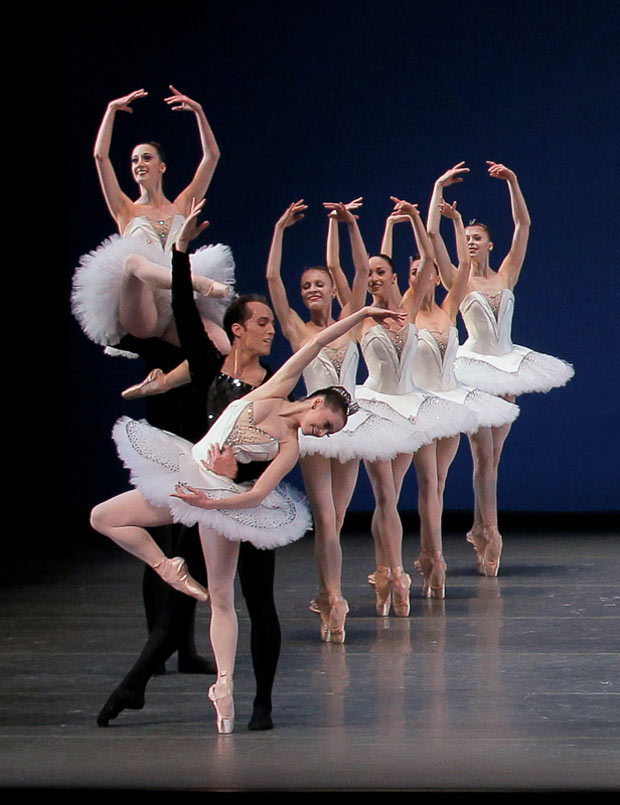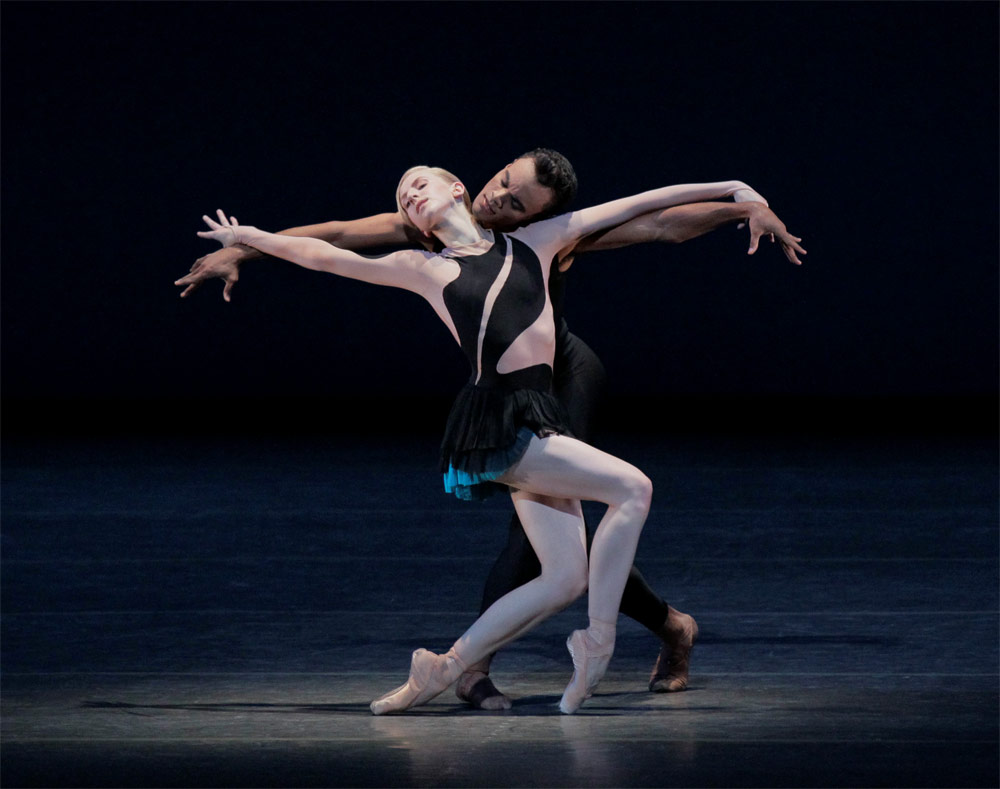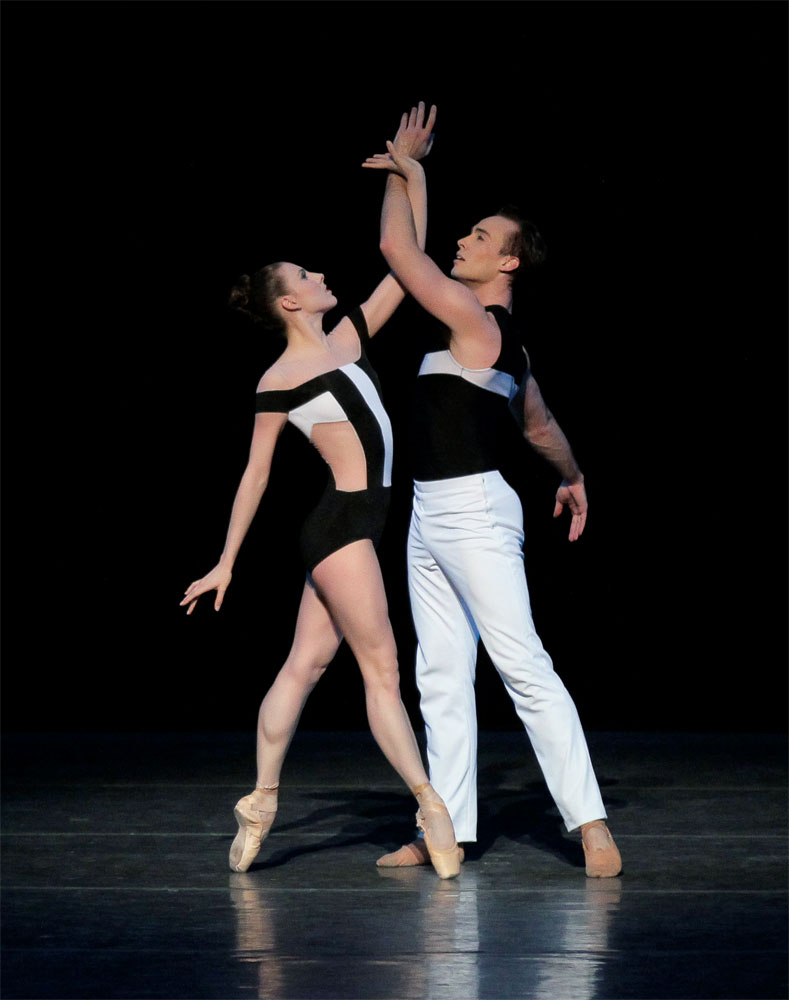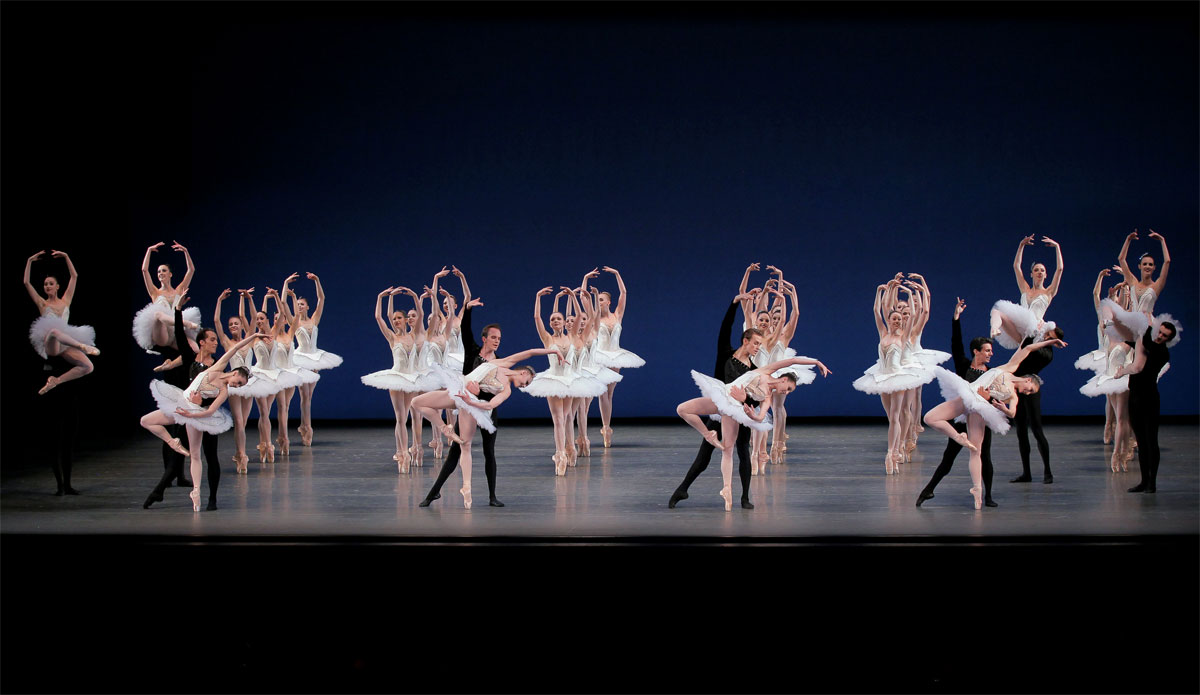
Something Old, Something New – New York City Ballet Spring Gala
New York City Ballet
Spring Gala: Mes Oiseaux, Two Hearts, Symphony in C
New York, David H. Koch Theater
11 May 2012
www.nycballet.com
Ballet galas come and go; why is it that they so often disappoint? There is no doubt that they play an essential part in a company’s survival, building excitement, bringing in funds, and providing an elaborate, glamorous frame for new work. But they also inflate expectations, create a hype that is hard to live up to. (Though it can happen – I’ll never forget the night Alexei Ratmansky’s “Concerto DSCH” was premièred at New York City Ballet. The excitement in the theatre just grew and grew until the audience erupted with applause.)
On May 11, New York City Ballet held its spring gala, with all the trimmings: a French theme (“À la Française”), a red carpet (Natalie Portman was the honorary chairman, though she did not make an appearance during the performance), pouffed party dresses, elegant dinner decorations for the invited guests, and spiffy costumes by high-end fashion designers for the dancers. Oh yes, and two new ballets – Peter Martins’ “Mes Oiseaux” and Benjamin Millepied’s “Two Hearts” – followed by a revival of Balanchine’s “Symphony in C,” re-costumed by the in-house costume director, Marc Happel.
I think it’s safe to say that neither of the new works knocked the planet off its axis; both were handsome, respectable pieces, but neither made a particularly strong impact. Neither was helped by its score. In the Martins ballet, the partnering seemed mainly conceived as a technical challenge – an exploration of the many ways a man can manipulate a woman’s legs, or lift her by inserting his hand between her legs. In Millepied’s, the central couple fell into the overused “two souls tormented by an unknown malaise” mode. Both dances were impeccably performed by uniformly strong – even spectacular – casts; it was particularly heartening to see the four very young dancers in Martins’ work, all members of the corps, being featured so prominently. They were more than equal to the challenge.

But neither work had much of an afterglow, beyond some striking images. What these images were trying to convey was less clear. One of the remarkable characteristics of Balanchine’s modernist “black and white” ballets is that, despite their abstraction, they never seem purposeless or purely technical. The dancers are part of a larger pattern of symbols and signs that involves their bodies and their minds. Neither “Mes Oiseaux” nor “Two Hearts” went very far in this respect. Partly, this was because of their scores, which tended toward the amorphous. Marc-André Dalbavie’s “Trio no. 1” consisted of seemingly disconnected phrases for violin, cello, and piano: repeated notes or chords, scales. A slow section was followed by a fast one; Martins’ choreography followed suit. The three women, Lauren Lovette, Ashly Isaacs, and Claire Kretzschmar (all lovely, all quite unique, though this was not easy to see) began by executing the same steps one after the other; then a solitary man (the quietly-focused Taylor Stanley) arrived, and began lifting them, one by one (a portent of things to come). As the music shifted to violin and piano scales, the first pas de deux began, with Taylor partnering Lauren Lovette; Stanley lifted her with his arm inserted between her legs (the first but certainly not the last lift executed in this manner), and then supported her as she turned slowly on pointe with her back arched over his arm and one exquisite leg extended forward, her ankle gripped by Taylor. This manipulation of the women’s legs, held in positions in front of or behind their bodies, became a recurring theme. What was it meant to evoke? Torment? Interdependence? Struggle? There was no way to tell. On its own terms, as an extended test of the dancers’ technique and ability to create shapes, “Mes Oiseaux” succeeded; but there was little more to be gleaned, either about the dancers’ individual qualities or about Martins’ view of them. Nor did the title (“my birds”) offer any help; there was nothing particularly bird-like about the choreography. Gilles Mendel’s costumes – black-and-nude leotards over short black skirts with a layer of colored fabric peeking out underneath – were not unattractive, but not particularly memorable.
Millepied’s dance was more ambitious, and the Rodarte costumes were certainly chic. For the women: short white dresses (and later an off-the-shoulder leotard) with bold black stripes that evoked the look of playing cards. And for the men, simple, elegant black-and-white trousers and tank tops. The cast consisted of six men, six women, and a principal couple: Tiler Peck and Tyler Angle. The two of them – beautiful and intense – could sell just about any ballet, and they did a pretty good job of selling this one. The music, a commissioned score by the young New York composer Nico Muhly, was atmospheric and thin – his orchestrations had little substance or momentum. A more rigorous (and less sentimental) score would have perhaps helped Millepied, forced him to be more structured and economical with his ideas. As it was, there were too many entrances and exits; the ballet dragged. But it began strongly, with a dynamic ensemble in which the men and women faced off competitively, creating forceful lines across the stage. The first pas de deux revealed a motif in which Angle slid Peck across swathes of space and placed her, doll-like, in a particular spot of his choosing. The ensemble that followed developed this starting-and-stopping motif, building upon it until Peck was repeatedly caught and held mid-leap, as if frozen in time. This was a rather impressive feat.

The final section of “Two Hearts” is set to an old English folk song, “Lord Thomas and Fair Eleanor,” about a doomed love triangle that ends with all the lovers dead (sung live by Dawn Landes). The lyrics are gory: “And he took off the brown girl’s head from her shoulders, and he flung it against the wall. He put the handle to the ground, the sword into his heart. No sooner did three lovers meet, no sooner did they part.” But the pas de deux (again for Peck and Angle) that it accompanies contains little hint of violence; it is slow, sensual, ambiguous. The two dancers sit on the stage and slide backwards, pushing back with their legs. Angle folds his partner across his lap and then holds her suspended above his prone body (another impressive image). They touch hands and walk and reach for something and look out searchingly into the audience. Something is amiss, but we don’t know what it is. The duet has a Wheeldon-like feel, in the vein of “After the Rain.” But unlike that ballet, the emotions here seem un-specific, a little generic. In his best ballets, like “Plainspoken” (2010) or “Troika” (2011) Millepied captures a particular quality in his dancers, an attitude, and makes it explicit. Those works have a tone, a sincerity that “Two Hearts” never achieves.

“Symphony in C,” on the other hand, is an undeniable masterpiece, an explosion of light, geometry, and feminine beauty. And yet, despite its spiffy new crystal-bedecked white tutus, this most luminous ballet did not shine as brightly as it could have, partly due to Fayçal Karoui’s rather workaday reading of Bizet’s score (memories of the Mariinsky’s brilliant rendition at the Lincoln Center Festival last year inevitably came to mind). It was a cold performance. I’m not a fan of showgirl smiles, but a certain amount of warmth and charme are built into the steps – all those little kicks, the perky piqués, the windmill arms, the toe-taps, the call-and-response between soloists and corps. Without a certain level of witty repartee, the ballet’s effect is thwarted. The soloists’ performances were mixed. Megan Fairchild, in the first movement, was lively as always, and technically precise; her partner, Jared Angle, was workmanlike and steady, but lacked stretch and brilliance. In the achingly slow second movement, Sara Mearns danced with her usual rapt intensity and sense of mystery, but her transitions were ragged; her tendency to push everything to an extreme undercut the creamy legato of the music, in which one phrase melts into the next. It should feel as if the whole movement were sung on a single breath. As Nancy Goldner wrote in her excellent “More Balanchine Variations,” Balanchine described the quality of this section as being like “the moon gliding across the sky.” The sustained, uninterrupted line – backward swoon into forward dive and back up, turn, repeat – that leaves one gasping for air. This is one occasion where Mearns could tone down her intensity for the sake of flow. Ashley Bouder and Joaquín de Luz were fun and brilliant in the Allegro that followed, but the best moment was the even brisker finale, led by Tiler Peck and Adrian Danchig-Waring, joined by the other soloists and the full corps. There is nothing like seeing all those legs and arms going up and down across the stage – it is one of the great ballet finales, and it always works its magic. I can’t wait to see it again.

















Those new Bizet costumes aren’t doing it for me. Was there really something wrong with Karinska’s?
I like this comment, Eric. It made me smile.